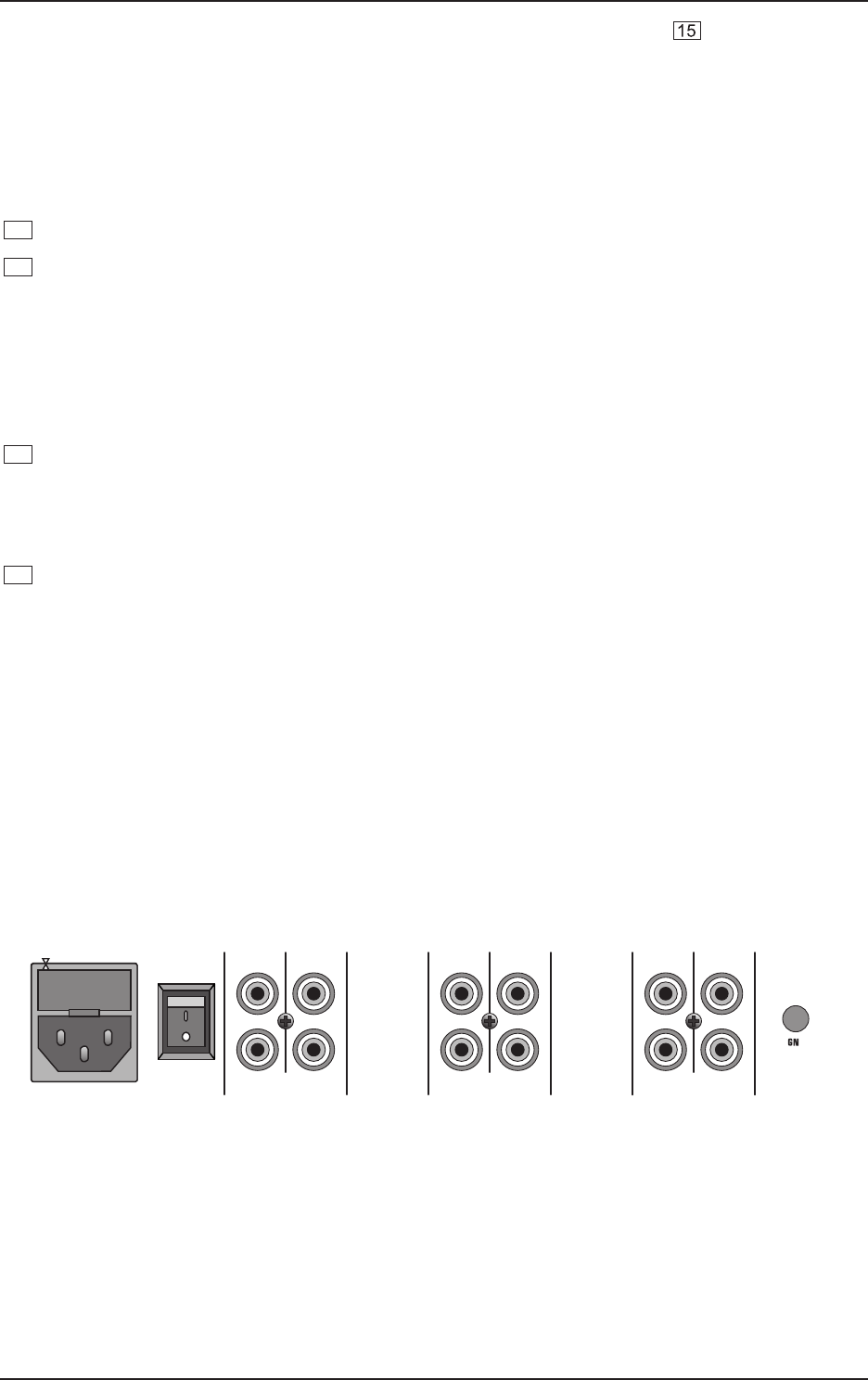
8
PRO MIXER VMX100
3. REAR PANEL
synchronization of channel 1 and 2 is shown in the TIME OFFSET LED display ( ) below the TEMPO
DIFFERENCE display. When the center LED is lit, the tracks are in sync with each other. When the display
moves to the left or right, the corresponding channel is running out of sync. The TEMPO DIFFERENCE and
TIME OFFSET displays are only active when the tempi of both channels have been locked as explained above.
To exit the SYNC LOCK or BEAT ASSIST mode, simply press the SYNC LOCK key in both channels again.
2.5 Crossfader section
16
The CROSSFADER is used to fade between channels 1 and 2.
17
The CURVE switch, located on the left side of the CROSSFADER, enables you to select between two
crossfade modes: SOFT and SHARP. In SOFT mode the crossfader fades between the channels in a
linear, continuous manner. This mode is recommended for slower, smoother crossfades. In SHARP
mode the crossfader takes on a more logarithmic effect, working faster towards the outer edges of the
fader range. Use this mode for faster, hard crossfades.
+ Flipping the CURVE switch may cause a sudden change in volume. We recommend not changing
this setting while a signal is present.
18
The MIC INPUT connector is a balanced ¼" TRS socket for microphone connection.
+ We strongly recommend the use of high-grade cables and connectors for the transmission of
audio signals. Inferior quality materials cannot supply acceptable audio quality or corrosion
protection.
19
The HEADPHONES socket allows you to connect your headphones for pre-listening (PFL signal). For
best results, use headphones with an impedance rating of at least 32 Ohms.
3. REAR PANEL
With the exception of MIC INPUT and HEADPHONES, all of the VMX100s audio connections are located on
the rear panel and supplied as RCA connectors.













